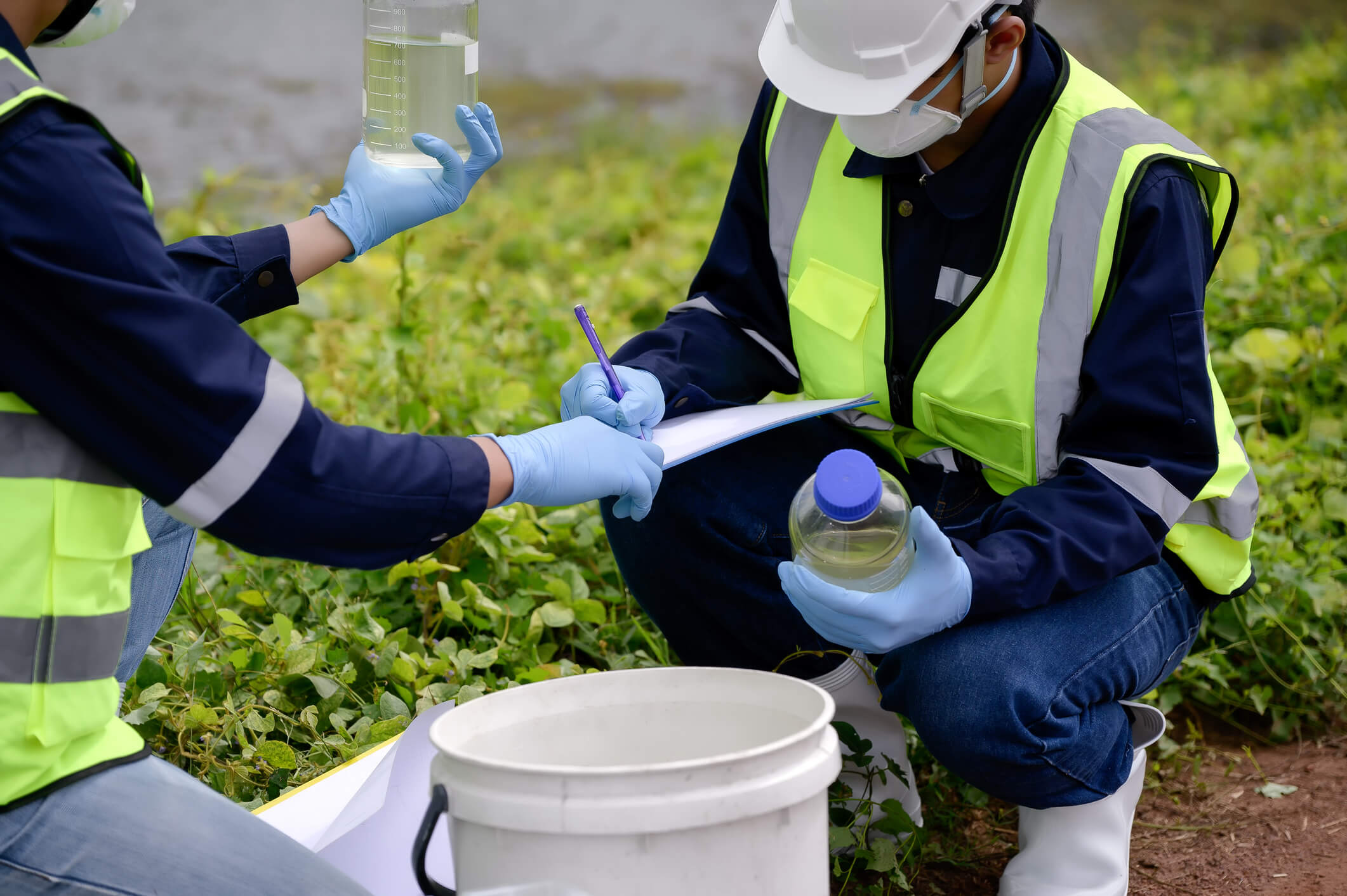Challenge
A local crude oil refinery plant that is part of a multinational company in the specialty chemicals industry became abruptly understaffed following the sudden departure of Environmental, Health and Safety (EHS) team members. The EHS manager contacted TRC to provide an experienced employee for immediate temporary staffing support. It was imperative for the client that the employee met mandatory training requirements and possessed the necessary expertise and professional experience.

Solution
TRC promptly provided an experienced Certified Industrial Hygienist (CIH) and Certified Safety Professional (CSP) to report directly the client’s EHS site manager. The TRC health and safety specialist was scheduled to be onsite two days per week and immediately began executing high priority tasks.
Services provided by TRC include:
- Upgrade of internal safety and compliance program through policy and document review
- Assist with ISO compliance and preparation for internal and third-party audits
- Collect periodic air and wipe sampling to assess exposure and maintain the annual IH sampling plan
- Provide scientific exposure assessment reports as needed; evaluating potential employee exposure for chemical and physical agents
- Create, revise and implement Job Safety Analysis (JSA) and risk assessment documentation
- Manage and provide a comprehensive industrial ergonomics assessment program and assist with development and implementation of ergonomic improvements
- Acquire, maintain and utilize an inventory of specialized IH and environmental instrumentation and monitoring devices
- Provide onsite emergency investigation and response
Results
The client’s EHS program experienced immediate and tangible performance improvements following TRC’s onsite presence. The contract was originally intended to be three months in duration, however due to exceptional performance and results, the contract has been repeatedly extended and is still in progress after four years.
Other notable benefits due to TRC’s support include:
- The site’s EHS group has received several safety achievements from their corporation; largely due to TRC’s contribution and engagement
- Onsite safety culture has experienced a noticeable improvement, including an increase in employee safety-related discussions and participation due to TRC’s interactions
- Process improvements resulting from the TRC implemented industrial ergonomics program has reduced work-place injury and lowered site overhead costs through process changes which increased operational efficiency
- Employee exposure to chemical, physical and occupational hazards has been effectively controlled, reduced and/or eliminated following TRC’s exposure monitoring and ventilation assessments
Gain
Peace-of-Mind
Partner With TRC’s Tested Practitioners
Related Projects
Discover the success we’ve had with helping our clients execute major projects and make a meaningful impact on their local communities.

Confined Space Hazard Assessment and Program Evaluation
TRC safety experts updated a client’s confined space program to improve documentation and safeguard against workplace accidents.

Development of Specific Procedures for Control of Hazardous Energy (Lockout/Tagout)
TRC developed lockout/tagout procedures to enhance workplace safety.

Implementing an EHS Software System for Optimizing Performance
Using An Enterprise EHS Platform To Establish And Monitor Compliance Challenges

Microsoft SharePoint Custom Environmental Compliance System
Leveraging Microsoft Office 365™ as an environmental compliance document management system.

Amtrak – Industrial Hygiene and Occupational Health and Safety
TRC delivers holistic vegetation management program solutions to this client. Our support for the EVM program provides consistent, reliable and …

Connecticut Department of Transportation Environmental Consulting Services
TRCs services are completed on an on-call and emergency response basis throughout Connecticut.
Sharing Our Perspectives
Our practitioners share their insights and perspectives on the trends and challenges shaping the market.

Fostering an Enjoyable and Resilient Project Management Career
March 10, 2025
In his final contribution to EM Magazine, TRC’s David Elam shares his thoughts on the health, well-being and success of project managers everywhere. These takeaways go beyond skills and habits in the workplace, and explore how project managers can align their lives outside of work with their professional goals.

OSHA Addresses Arc Flash Hazards and Electrical Safety in the Workplace
March 5, 2025
OSHA releases guidance document on “Addressing Arc Flash Hazards in a Safety and Health Program” and the alignment with NFPA 70E standard for Electrical Safety in the Workplace. The Occupational Safety and Health Administration (OSHA) recently published a guidance document that aligns with the National Fire Protection Association (NFPA) 70E standard for Electrical Safety in the Workplace. The guidance document outlines how to use a management system to protect workers from arc flash hazards by focusing on worker participation, hazard identification, evaluation and control methods.

Changes to EPA’s Risk Management Program (RMP) Regulations Are Coming
April 14, 2023
Changes to the Risk Management Program (RMP) regulations were signed into a final rule on February 27, 2024, by EPA Administrator Michael S. Regan.

EPA Finds Trichloroethylene Presents Unreasonable Risk in Final Risk Evaluation
April 6, 2023
On Jan 9, 2023, the United States Environmental Protection Agency (EPA) revised the Toxic Substance Control Act (TSCA) to reflect a new risk determination for trichloroethylene (TCE).

Routinely Evaluating the Health & Effectiveness of Integrated Systems to Manage EHS/ESG Risks – Part I
March 1, 2023
Once established, an EHS/ESG management system must be routinely evaluated to ensure it remains effective to identify and control risks, as well as accommodate and adjust for changes that occur to/within the organization.

QA and Chemistry Services
February 23, 2023
TRC offers many QA and Chemistry services including data usability assessments, limited and full data validation reports, quality assurance project plan preparation, selection of appropriate analytical methodologies and laboratory audits.

PFAS Fate and Transport: Conceptual Site Models
February 23, 2023
The conceptual site model describes site-specific sources, release and transport mechanisms, exposure media, exposure points, exposure pathways and routes and potential human and/or ecological receptor populations.

EPA Publishes Effluent Guidelines Program Plan 15
February 14, 2023
The EPA announced updated effluent limitations guidelines under Plan 15, focusing on the evaluation and rulemaking process for per- and polyfluoroalkyl substances (PFAS) discharges.

PFAS: Remedial Approaches
February 8, 2023
Remediating Per- and poly-fluoroalkyl substances (PFAS) from the soil and water requires effective techniques and innovative technologies. TRC’s experts are well versed in several remediation strategies intended to remove PFAS and prevent re-exposure.

Proactive Enforcement is Key in the EPA FY2022-2026 Strategy
October 19, 2022
A core element of the EPA FY2022-2026 Strategic Plan focuses on environmental compliance.

Optimizing EHS/ESG Information Management and Reporting Systems by Leveraging Innovative Digital Technology Solutions
August 10, 2022
A single, integrated enterprise wide EHS/ESG IMS can significantly improve performance and communicate progress towards organizational requirements and goals.

Integrating Sustainability, Digital Connectivity and Design Optimization in Wastewater Treatment Systems
June 20, 2022
Some organizations rarely think about water and wastewater treatment, until there is a problem. American industry depends on the ability to treat wastewater discharges while complying with regulatory standards and addressing emerging contaminants. If wastewater treatment fails, our environment is negatively impacted, and companies are exposed to shutdowns, delays and fines.

Support an Integrated EHS/ESG Management System
June 10, 2022
WINDSOR, Conn. – TRC Companies, a digitally powered and environmentally focused global professional services firm, has been named #21 by Environmental Analyst in the 2022 Top 100 Environmental & Sustainability Consultancy Firms. “As one of the top global providers of Climate Solutions, TRC is proud to be recognized as a leader in environmental and sustainability, areas that are critically important to our clients and communities we serve,” said Christopher P. Vincze, Chairman & CEO of TRC. “Sustainability is a fundamental principle that drives our business, and we embrace the trust our clients place in us as we tackle some of the pressing energy, environmental and infrastructure challenges the world faces… making the Earth a better place to live — community by community and project by project.”

TRC Companies Pledges to Achieve Net Zero GHG Emissions by 2040
April 26, 2022
TRC Companies, a digitally powered and environmentally focused global professional services firm, announced its commitment to achieve Net Zero greenhouse gas (GHG) emissions across its full value chain by 2040, aligning with the most ambitious aim of the Paris Agreement to limit global temperature rises to 1.5 °C.

How to Use an Integrated Approach To Manage EHS and ESG Risks
April 20, 2022
WINDSOR, Conn. – TRC Companies, a digitally powered and environmentally focused global professional services firm, has been named #21 by Environmental Analyst in the 2022 Top 100 Environmental & Sustainability Consultancy Firms. “As one of the top global providers of Climate Solutions, TRC is proud to be recognized as a leader in environmental and sustainability, areas that are critically important to our clients and communities we serve,” said Christopher P. Vincze, Chairman & CEO of TRC. “Sustainability is a fundamental principle that drives our business, and we embrace the trust our clients place in us as we tackle some of the pressing energy, environmental and infrastructure challenges the world faces… making the Earth a better place to live — community by community and project by project.”

SEC Releases New Proposed Rules Requiring Public Companies to Disclose Climate Risks
April 12, 2022
On March 21, 2022, the U.S. Securities and Exchange Commission (SEC) issued its proposed rules for The Enhancement and Standardization of Climate-Related Disclosures for Investors which would require public companies in the U.S. to disclose information in their annual financial reports.

EPA Issues Information Collection Request for Plywood and Composite Wood Products Source Operators
March 17, 2022
EPA issued an Information Collection Request (ICR) to develop new emission standards for inclusion in the Plywood and Composite Wood Products (PCWP) National Emissions Standards for Hazardous Air Pollutants (NESHAP).

EPA Lifts Stay of Standards for New Lean Premix and Diffusion Flame Gas-fired Combustion Turbines
March 14, 2022
The EPA Administration signed a notice to finalize amendments to the National Emission Standards for Hazardous Air Pollutants (NESHAP) for Stationary Combustion Turbines

PFOA & PFOS As CERCLA Hazardous Substances: What Does This Mean and How Can You Be Prepared?
February 17, 2022
A plan to designate two per- and polyfluoroalkyl substances (PFAS) as “hazardous substances” under CERCLA was recently submitted by the EPA.

OSHA’s National Emphasis Program on Heat-Related Illness and Injuries
November 3, 2021
On September 20, 2021 in an OSHA National News Release, OSHA published a memorandum establishing an enforcement initiative that is designed to prevent and protect employees from heat-related illnesses and death. This initiative, which develops a National Emphasis Program (NEP) on heat inspections, is an expansion of an already existing Regional Emphasis Program (REP) in OSHA’s Region VI, which covers Arkansas, Louisiana, New Mexico, Oklahoma and Texas.

NJDEP Implements New Jersey Environmental Justice Law Through Administrative Order
October 5, 2021
On September 22, 2021, the New Jersey Department of Environmental Protection (NJDEP) Commissioner announced the issuance of Administrative Order (AO) No. 2021-25 to implement New Jersey’s Environmental Justice (EJ) Law. This order is effective immediately, and applicants seeking to site new major source facilities, renew major source permits or expand existing facilities with major source permits (e.g., Title V air permits) in overburdened communities are affected. There are more than 4.5 million people that live within 331 municipalities that are overburdened communities in the state of New Jersey.

OSHA’s Call for Comments on Mechanical Power Press Standard Changes
September 30, 2021
OSHA has recently published a call for comment regarding mechanical power presses. The reason behind OSHA’s request is that the American National Standards Institute (ANSI) consensus standard for mechanical power presses has been updated numerous times since the implementation of OSHA’s standard.

OSHA Returns to In-Person Inspections As COVID-19 Restrictions Lift
August 4, 2021
The Occupational Safety and Health Administration (OSHA) is authorized by the Occupational Safety and Health Act of 1970 (OSH Act) to assure employers provide safe and healthful work conditions free of recognized hazards and by setting and enforcing standards and providing training, outreach, education and technical assistance. OSHA has recently announced the return to in-person inspections as COVID-19 restrictions begin to lift.

Managing EHS & ESG Risks Through Integrated Systems Today and Beyond
July 22, 2021
It has been more than 50 years since the development and establishment of the federal Environmental Protection Agency (EPA) and the federal Occupational Safety & Health Administration (OSHA) which were formed to protect our environment and workplaces across the United States. Significant laws, policies and regulations followed to establish the “regulatory programs” that all applicable businesses and entities must address and meet to ensure these compliance-driven legislative programs would create a foundation to protect our society.





















